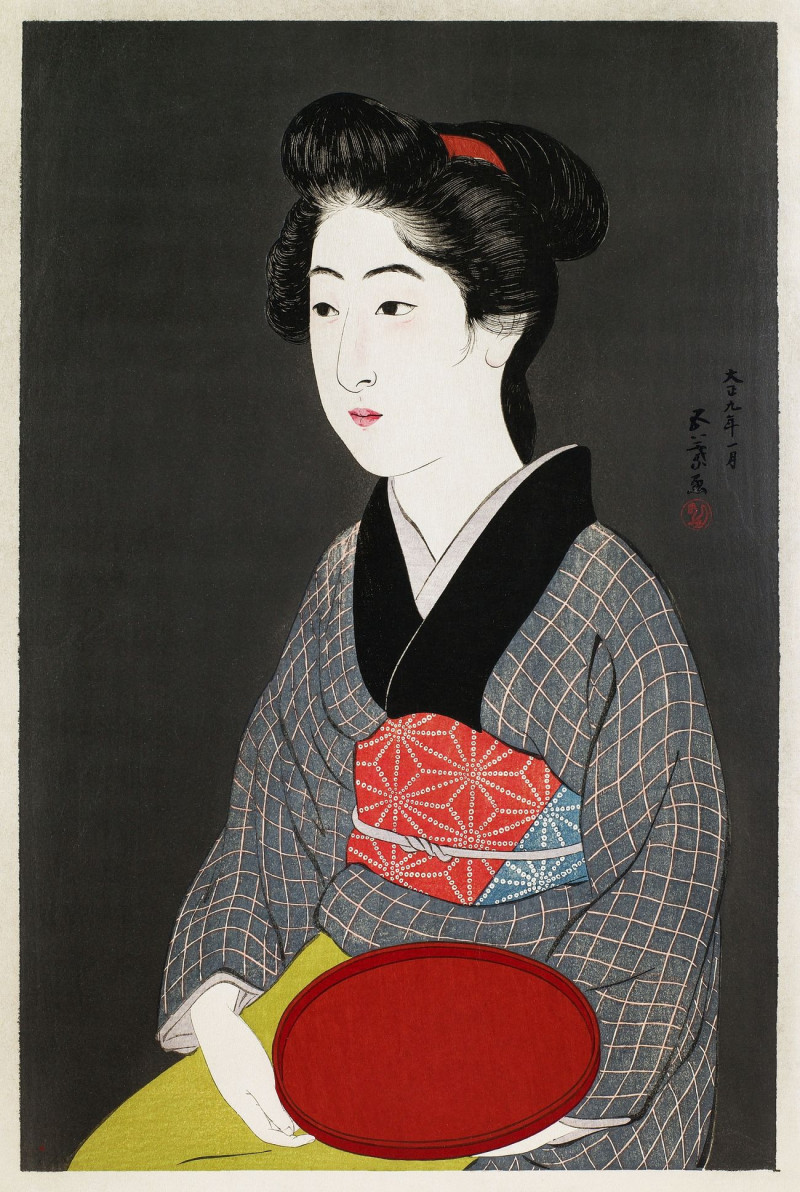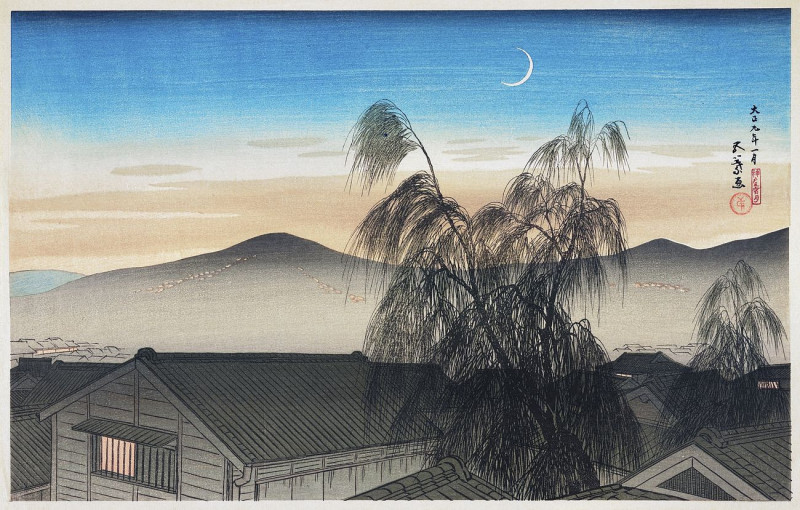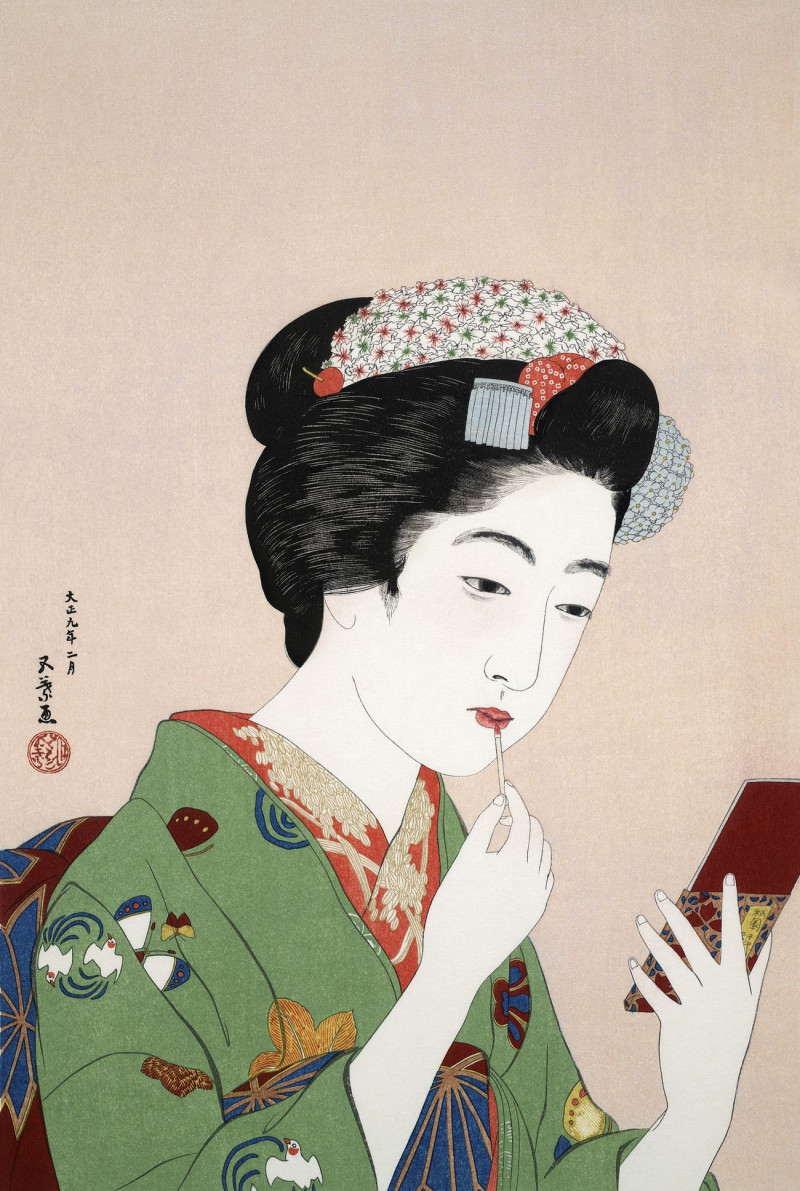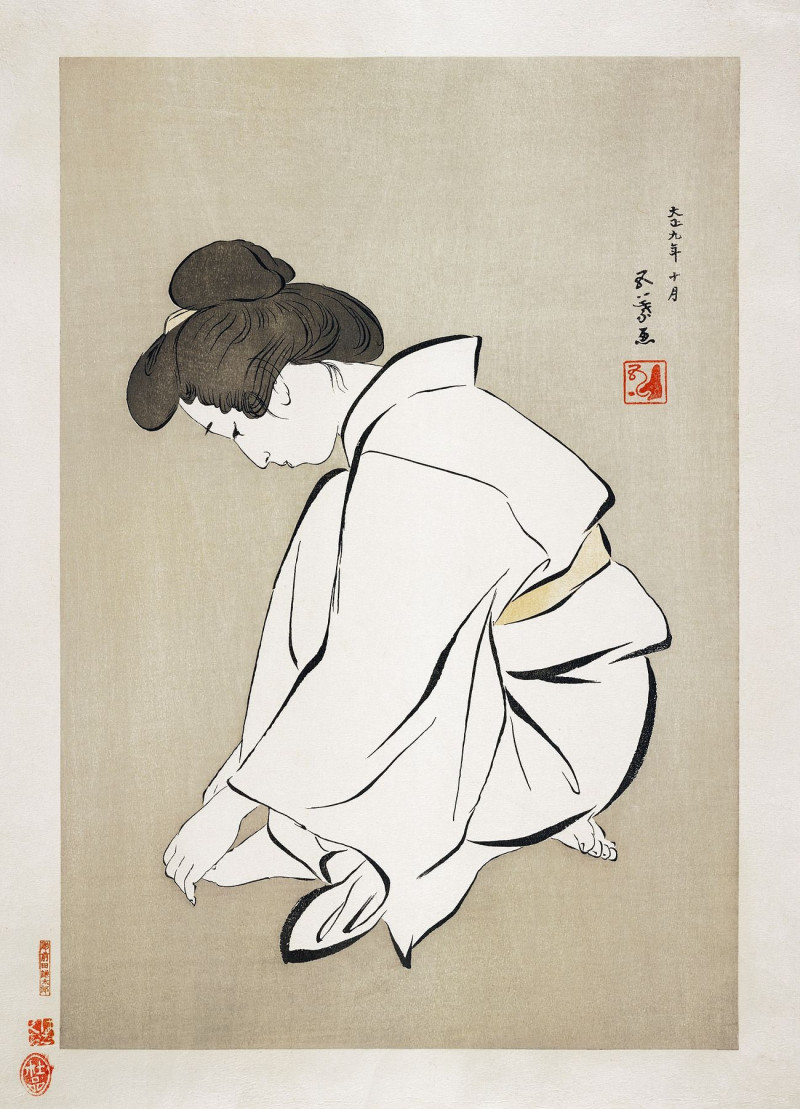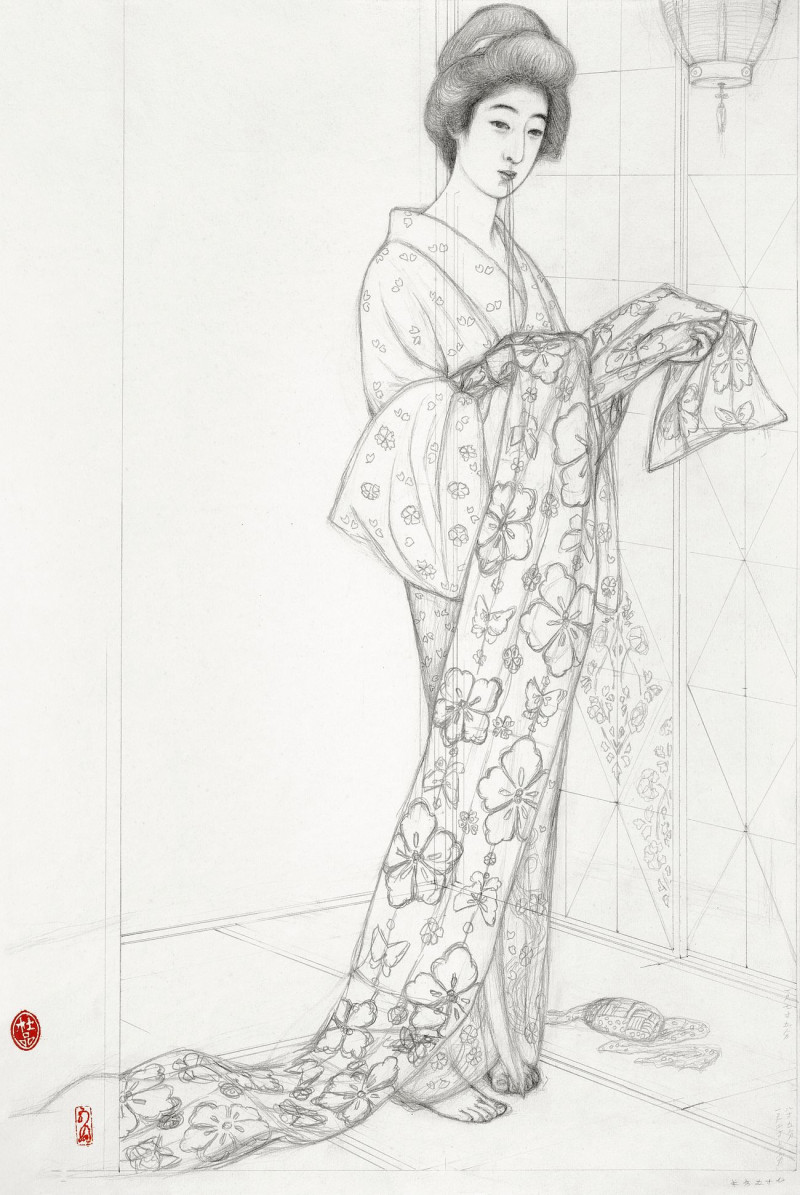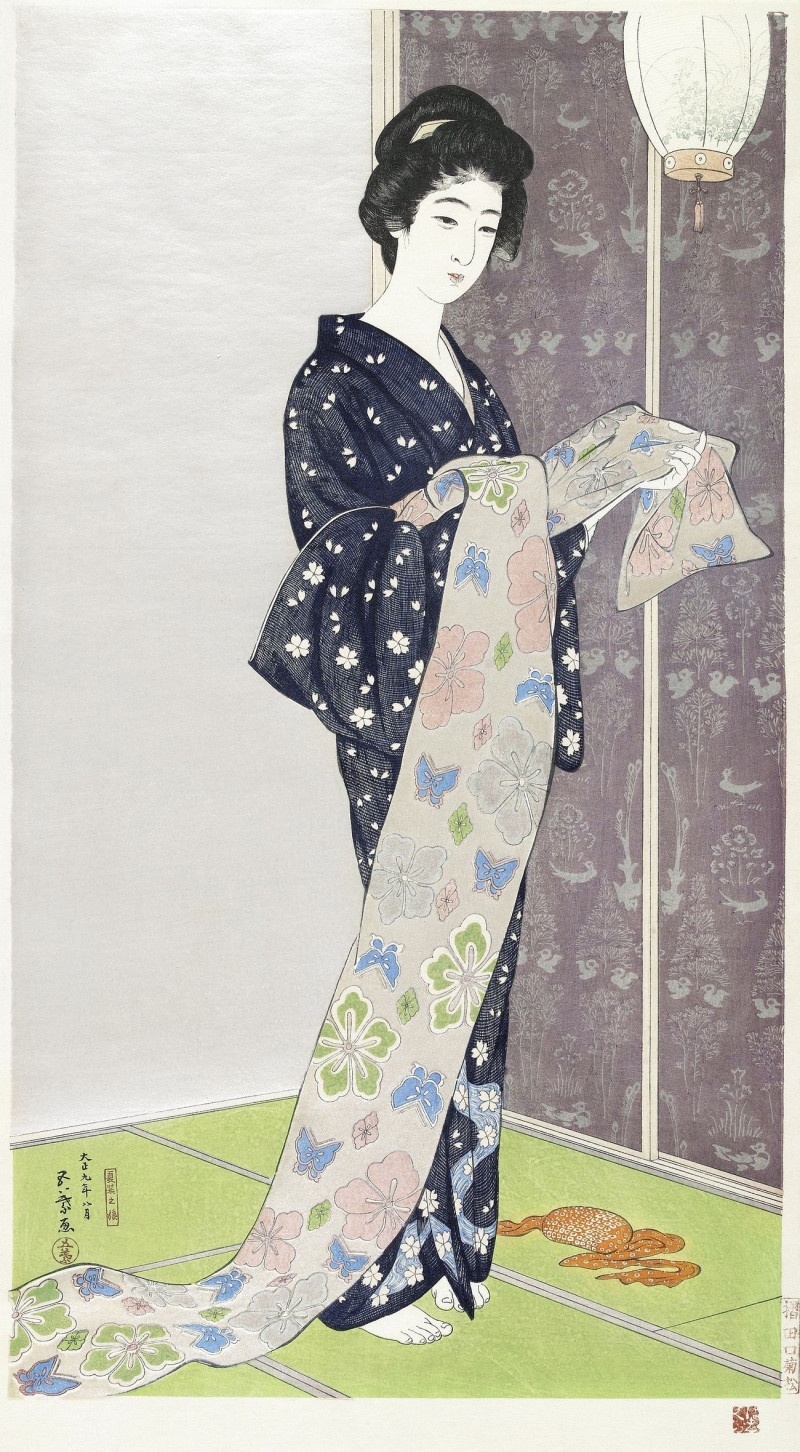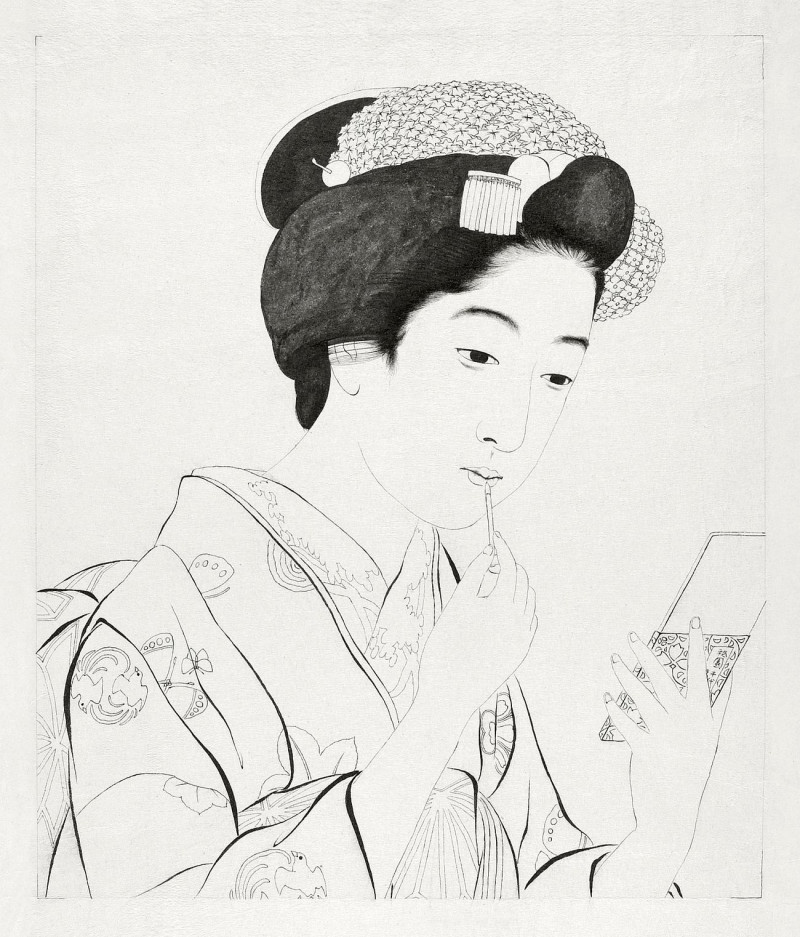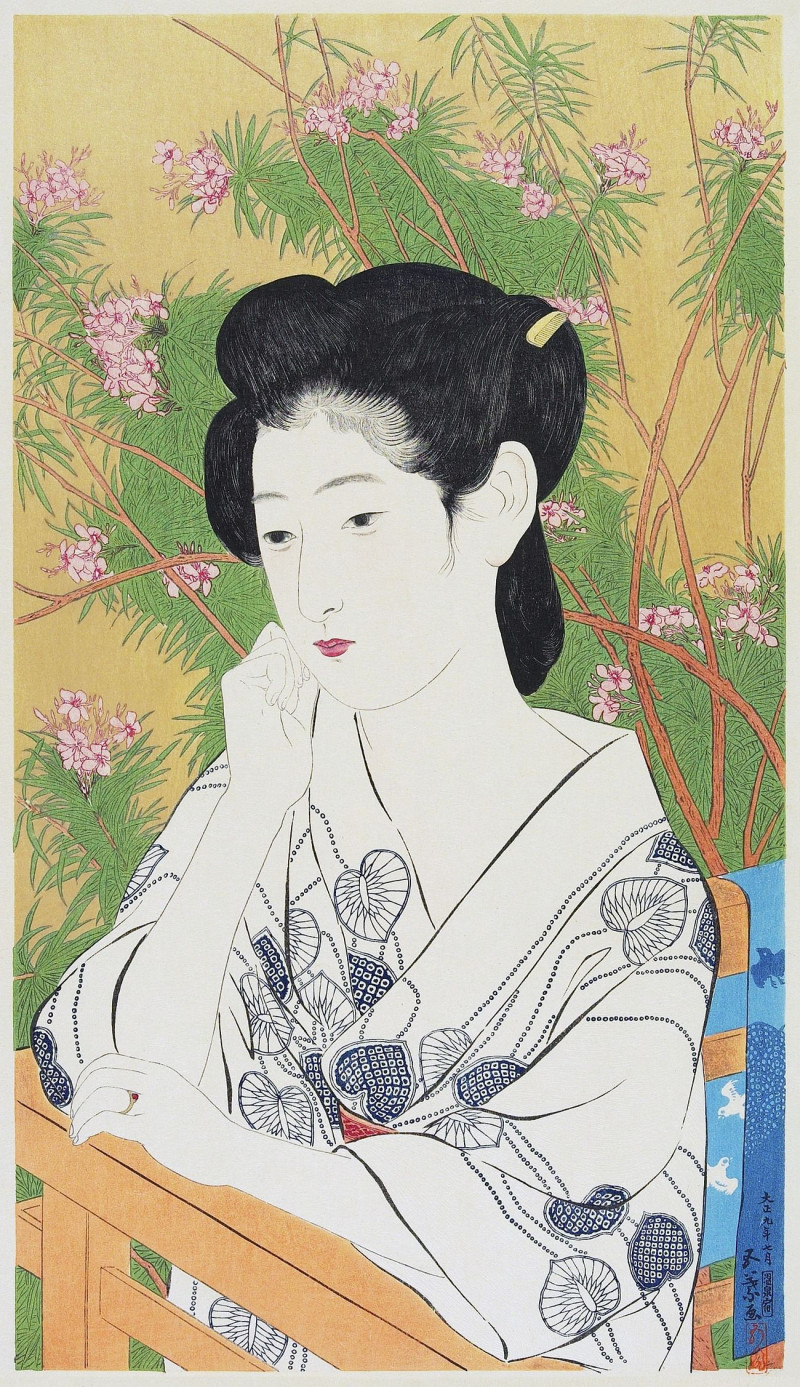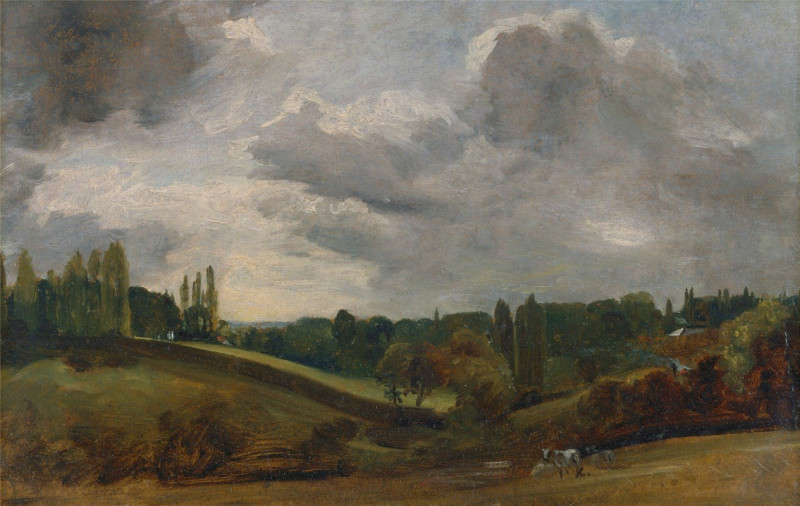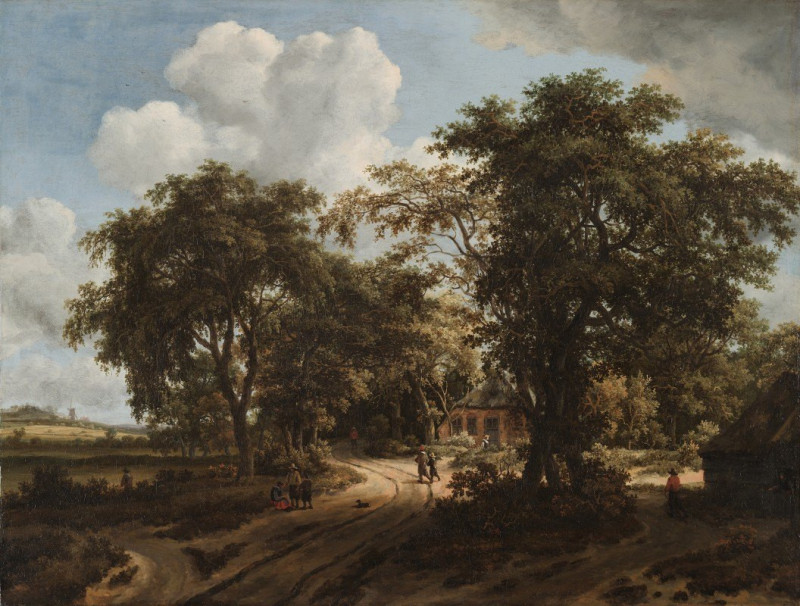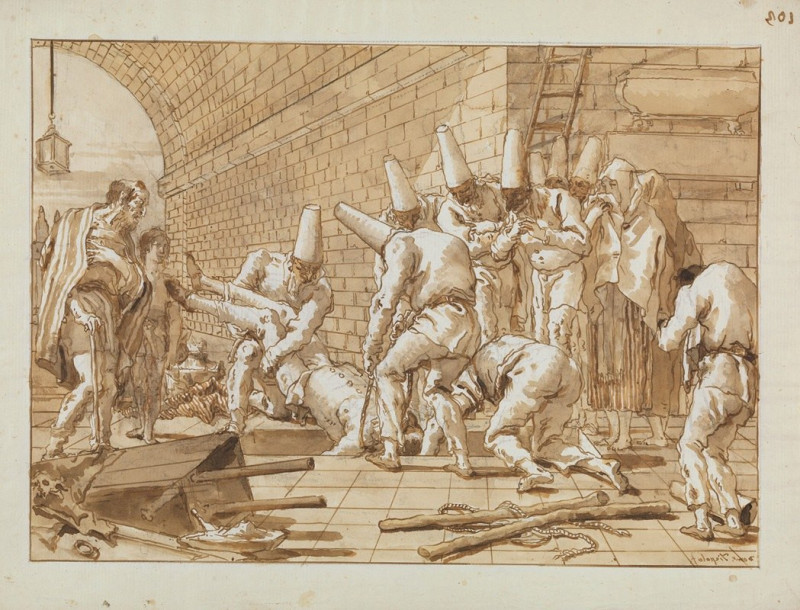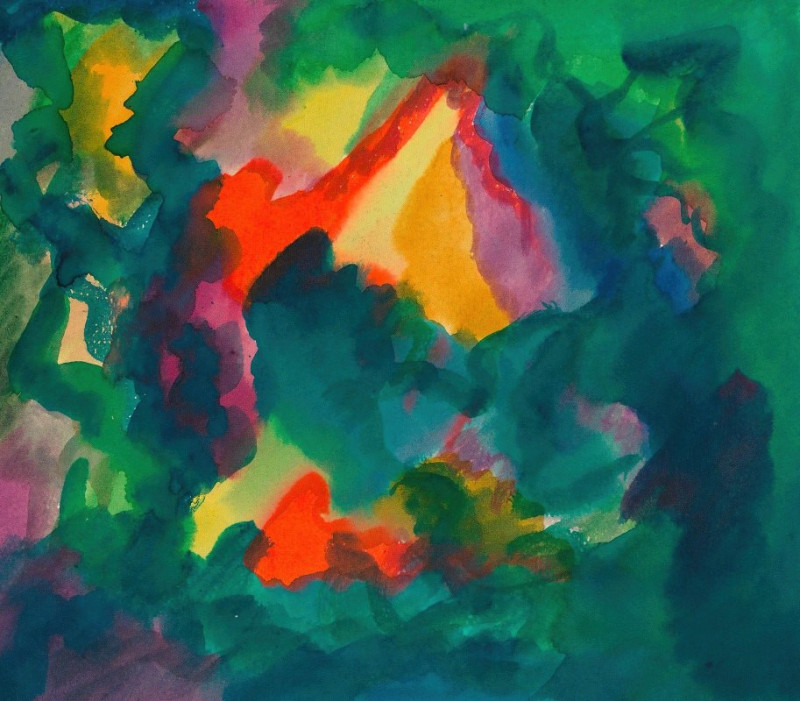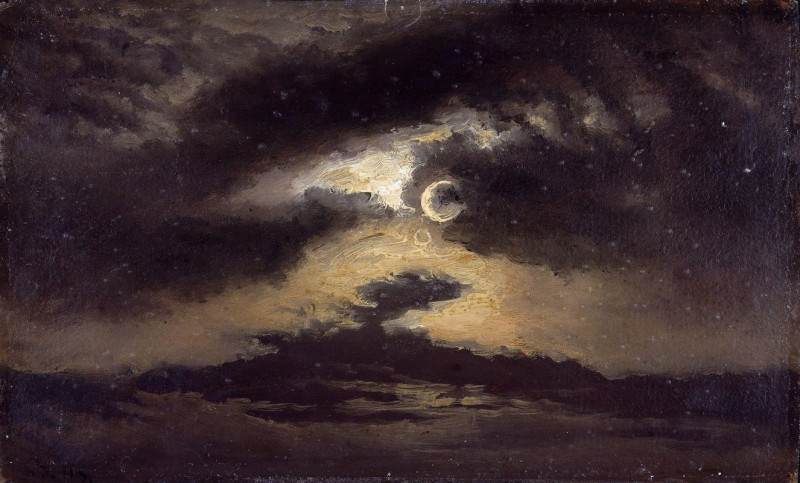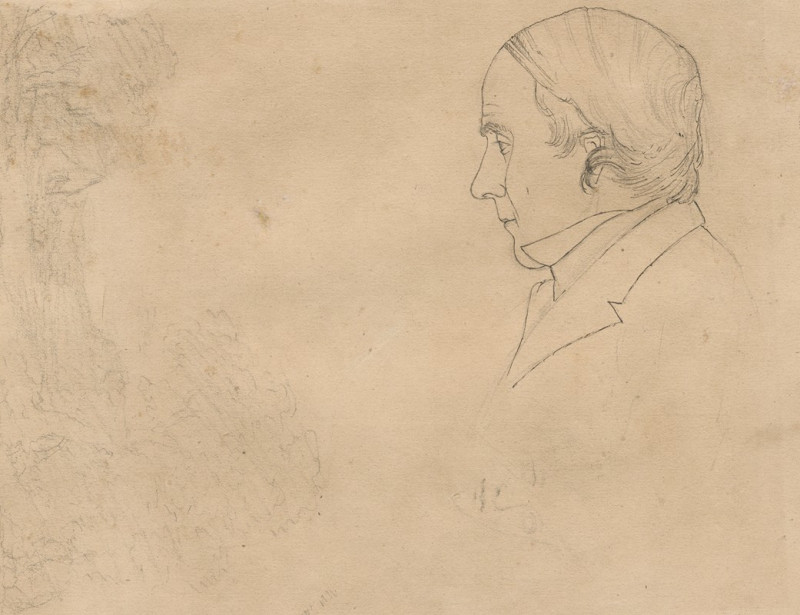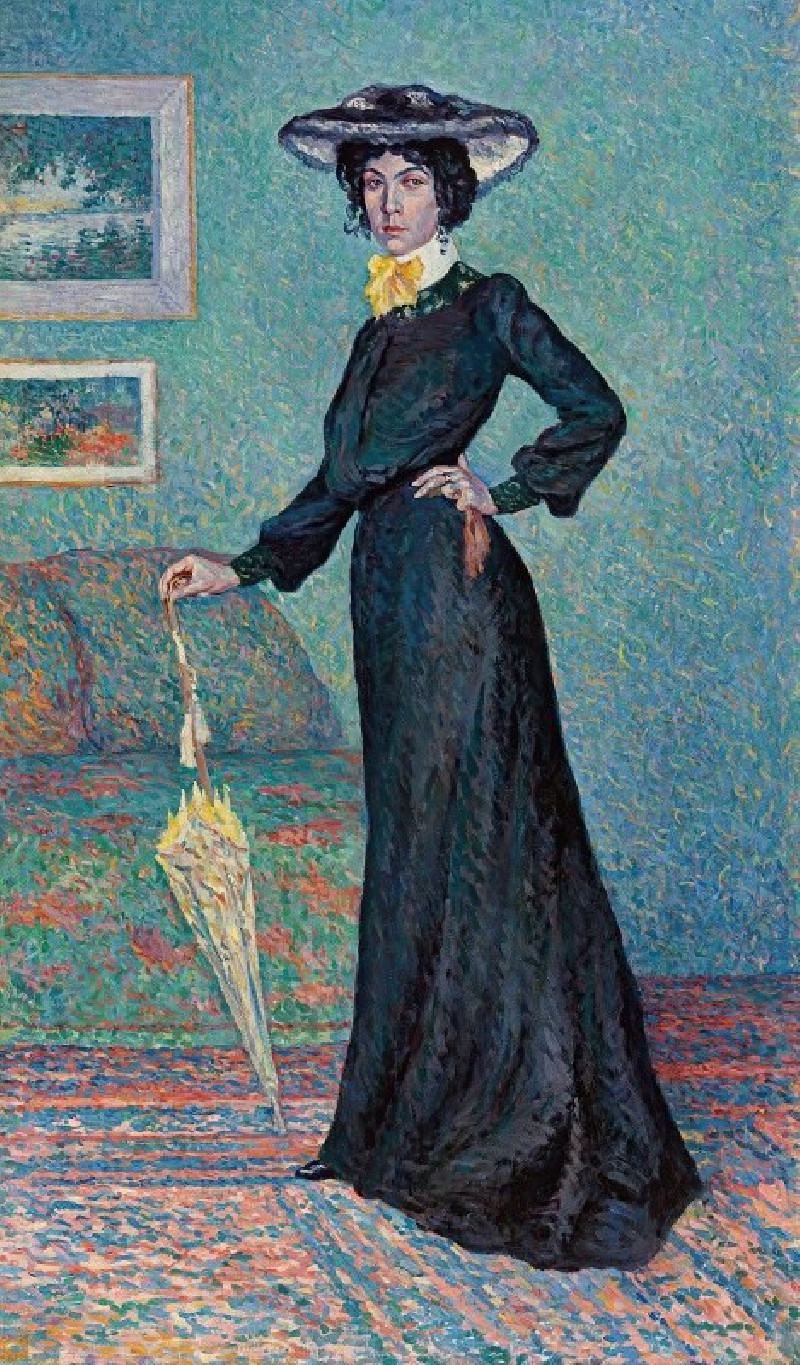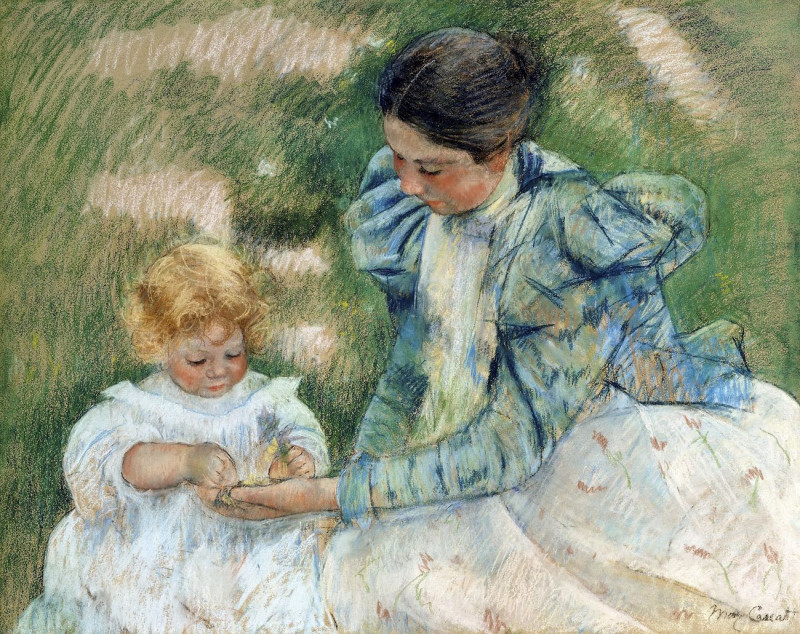Waitress Holding A Tray
Technique: Giclée quality print
Recommended by our customers
More about this artwork
"Waitress Holding A Tray" by Goyo Hashiguchi is a striking Japanese woodblock print that depicts a waitress, exuding a sense of elegant composure and attentive service. The waitress is portrayed with a subtle, dignified expression, her gaze slightly averted as if looking beyond the frame. Her hair is styled in a traditional manner, neatly arranged in a bun, adorned with a red accessory that adds a delicate touch of color.Her attire is traditional and meticulously detailed, featuring a kimono layered with various patterns and textures, showcasing Hashiguchi's skill in portraying intricate textile designs. The dominant kimono is clad in a slate blue with a fine grid pattern, over which a smaller, vividly red garment with a white dot pattern is worn. The combination of these elements lends depth and character to her attire, emphasizing the craftsmanship of Japanese kimono design.The waitress is holding a large, red serving tray, which forms a bold contrast with her intricate kimono and serves as a focal point in the composition, drawing the viewer's attention to her gentle hands, suggesting her readiness to serve.The background of the artwork is minimalist and dark, which sharply contrasts with the light and detailed depiction of the waitress, thereby focusing all attention on her and her traditional attire.Overall, Goyo Hashiguchi's print is a stunning representation of early 20th-century Japanese art, capturing the beauty and quiet dignity of a moment in the life of a waitress.
Delivery
Returns
Goyō Hashiguchi (1880-1921) was a Japanese scholar, artist, Ukiyo-e woodblock printer, and a Samurai's heir. He was trained in traditional Kano painting by his father, and later studied western oil painting at the Tokyo School of Fine Arts. He was encouraged by, and collaborated with shin hanga publisher Watanabe Shozaburo. Goyo portrayed women in intimate settings including at the bathhouse, hot springs, powder room, and in the nude. He was a perfectionist and only published 14 prints in his lifetime, these are among the finest and most highly priced Japanese modern prints.

